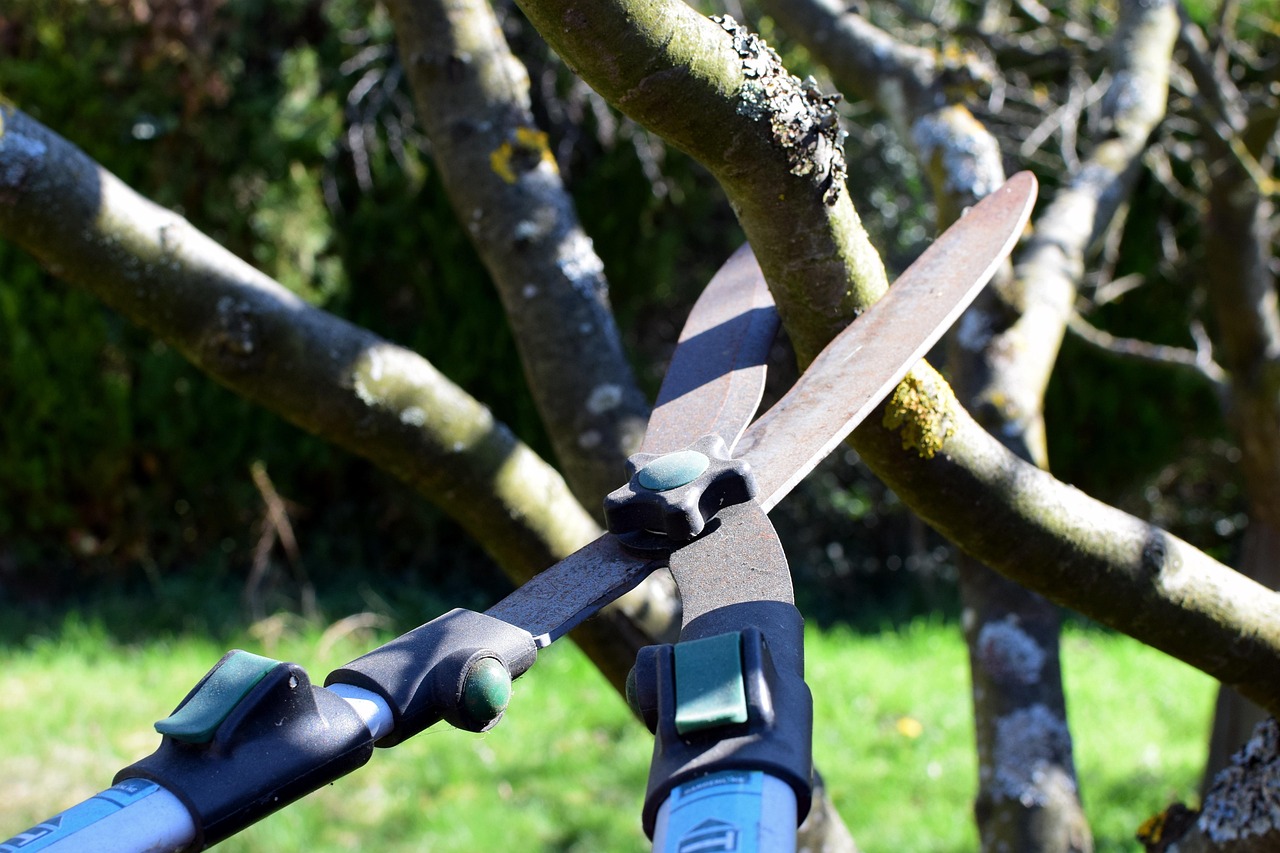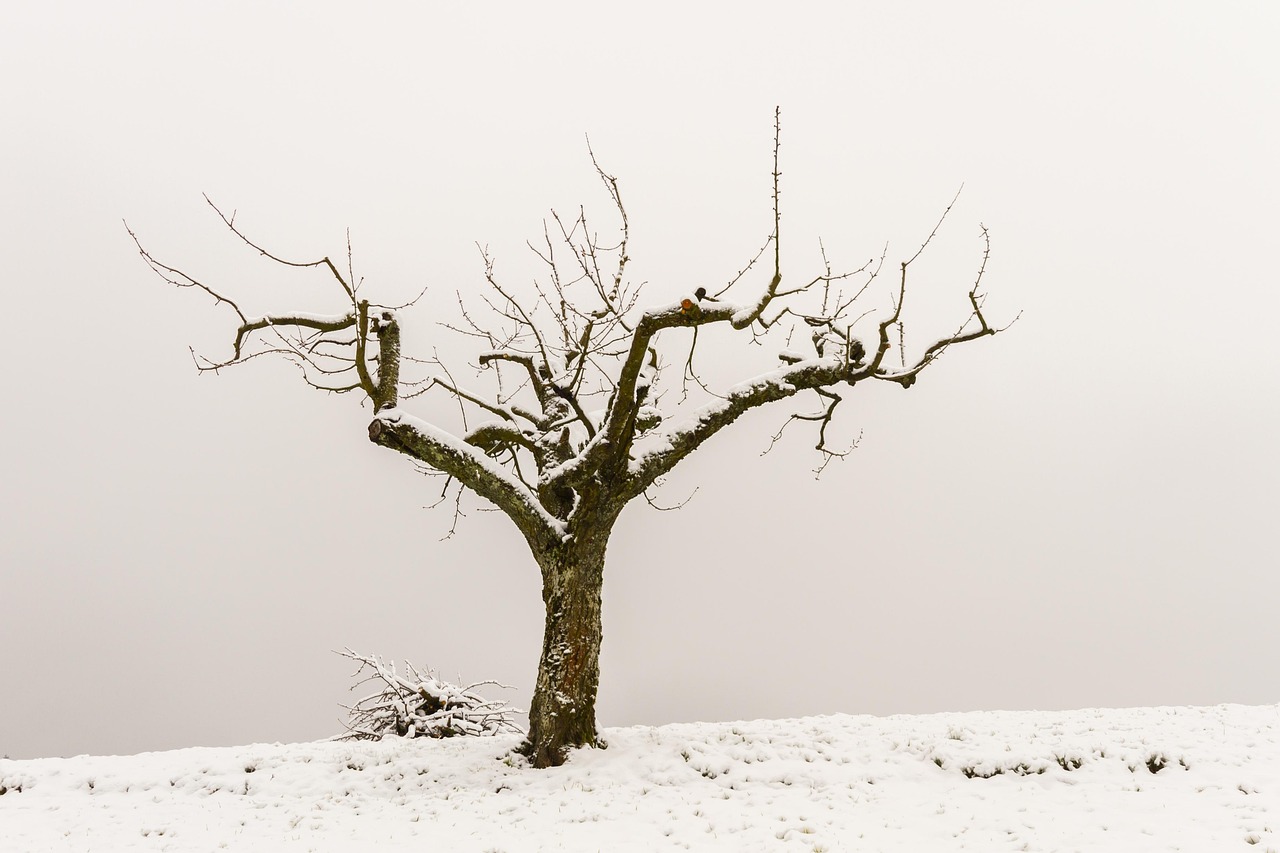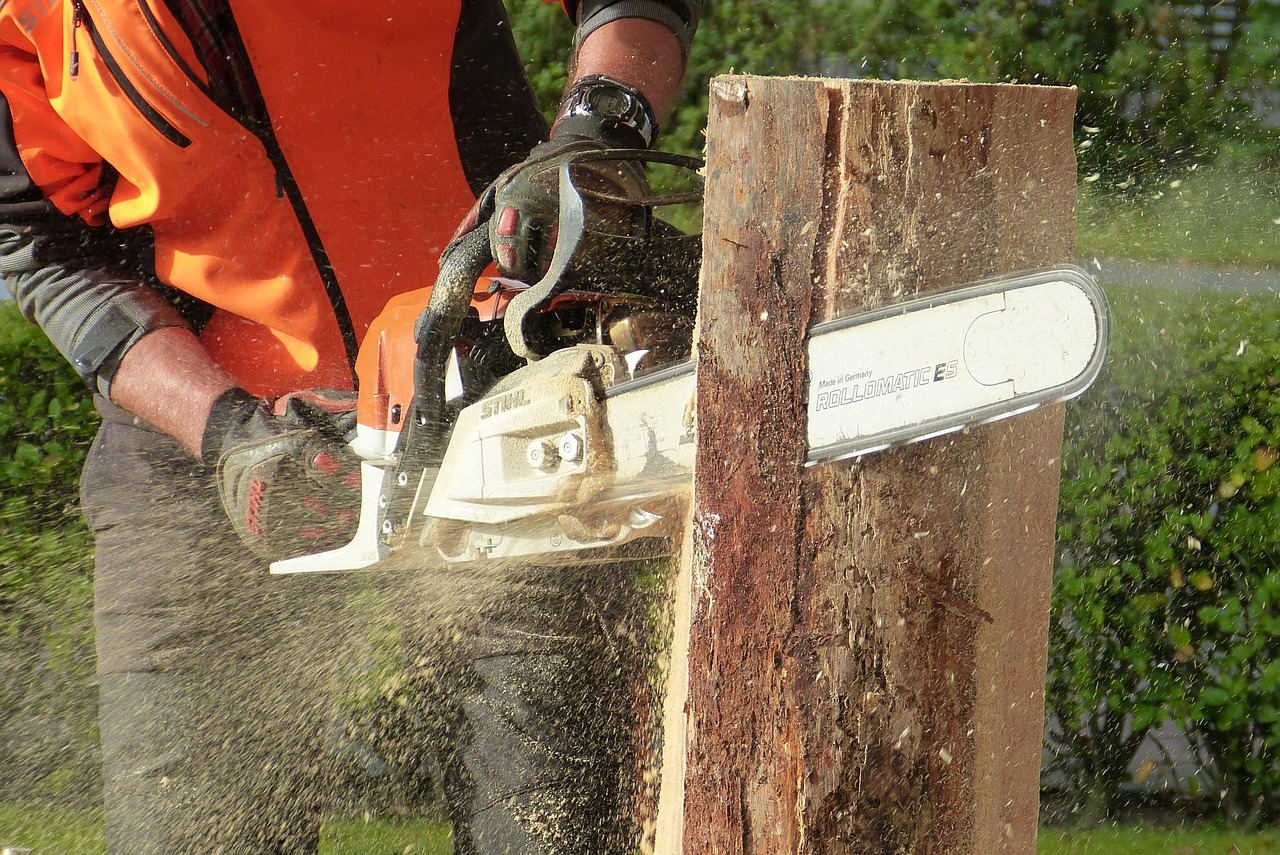Safe practices for tree pruning on sloped areas include using proper equipment, maintaining a stable footing, and ensuring good visibility. Always prune during dry conditions and use a buddy system when working on steep terrain to enhance safety.
Tree pruning is an essential part of maintaining healthy trees, especially in areas with slopes. Sloped landscapes present unique challenges. The risk of slips and falls increases on uneven ground. Therefore, understanding the right techniques and safety measures is vital for anyone involved in tree care. Pruning promotes growth, improves tree shape, and removes dead or diseased limbs. However, when performed incorrectly, it can lead to accidents or damage to the tree.

In sloped areas, the risks associated with pruning are heightened. It is important to prioritize safety while ensuring the health of the tree. This article will provide an in-depth look at safe practices for tree pruning specifically in sloped regions. We will explore essential equipment, techniques, and safety tips that will help both novice and experienced gardeners.
Understanding the Risks of Tree Pruning on Slopes
Pruning trees on sloped terrain involves several hazards that must be addressed. The following are some common risks associated with this practice:
- Loss of balance due to uneven surfaces.
- Falling branches or tools.
- Increased fatigue from physical exertion.
- Limited visibility of surrounding areas.
Each of these hazards can lead to serious injuries. Therefore, it is crucial to assess the slope’s steepness and condition before starting any pruning work. Understanding these risks allows for better preparation and execution of safe practices.

To further illustrate the risks involved in pruning on slopes, consider the following table that outlines common hazards and their potential consequences:
| Hazard | Description | Potential Consequences |
|---|---|---|
| Slippery surfaces | Mud, wet leaves, or loose soil can make footing unstable. | Falls leading to sprains or fractures. |
| Falling branches | Improper cutting techniques may cause branches to fall unexpectedly. | Injury or damage to property below. |
| Fatigue | Working on a slope requires more energy than flat terrain. | Decreased focus leading to accidents. |
| Poor visibility | Branches or foliage may obscure the view of your surroundings. | Increased risk of accidents from unseen obstacles. |
It is essential to recognize these hazards so that effective preventive measures can be put in place. By doing so, individuals can minimize risks and ensure a safer pruning experience.
Essential Equipment for Safe Pruning
The right equipment can significantly enhance safety during tree pruning on slopes. Here are some necessary tools:

- Climbing harness: A harness provides support and safety when working on steep inclines.
- Rope and harness system: This setup allows for secure positioning while pruning high branches.
- Pruning saws: Use lightweight and sharp saws for efficient cutting.
- Loppers: These are useful for cutting thicker branches while maintaining control.
- Safety goggles and gloves: Protect your eyes and hands from debris and sharp tools.
Having these tools readily available not only aids in effective pruning but also enhances overall safety. It is important to inspect all equipment before use to ensure functionality and safety standards are met.
Techniques for Pruning Trees Safely on Slopes
Safe techniques for tree pruning on sloped areas include the following:
- Evaluate the slope: Understand the terrain and identify stable footing before beginning work.
- Use a buddy system: Always have someone nearby in case of emergencies.
- Work from the bottom up: Start pruning lower branches first to maintain balance.
- Avoid overreaching: Position yourself properly to avoid losing balance while cutting branches.
- Be cautious with overhead cuts: Ensure no one is below you when cutting branches overhead.
By implementing these techniques, individuals can significantly reduce the chance of accidents while ensuring effective pruning. Always remember that safety should be the top priority during any tree maintenance task, especially in challenging environments like sloped areas.

The importance of following proper practices cannot be overstated. With the right knowledge and equipment, tree pruning can be a safe and rewarding experience, even in sloped areas.
Choosing the Right Time for Pruning
The timing of tree pruning is crucial for both the health of the tree and the safety of the person performing the task. Different types of trees have specific pruning windows, and understanding these can lead to better outcomes.
Generally, the best times to prune trees are:
- Late winter to early spring: This period is ideal for many deciduous trees. Pruning during dormancy minimizes stress on the tree.
- After flowering: Trees that bloom in spring should be pruned right after their flowering period to avoid removing buds.
- During dry weather: Pruning during dry conditions reduces the risk of disease and keeps the work area safer.
It is important to avoid pruning during extreme weather conditions. High winds or wet conditions can create additional hazards when working on slopes. Always check the weather forecast before planning a pruning session.
Preparing Your Work Area
A well-prepared work area can greatly enhance safety and efficiency. Here are steps to take before beginning your pruning task:
- Clear the area: Remove any debris, branches, or tools that could pose a tripping hazard.
- Identify potential hazards: Look for unstable ground, nearby power lines, or other trees that could affect your work.
- Create a safe zone: Establish a perimeter around your work area where others should not enter while you are pruning.
- Ensure visibility: Make sure that the area is well-lit if you are working in low-light conditions.
Taking the time to prepare your work area can prevent accidents and make the pruning process smoother. It is essential to create a safe environment before beginning any tree maintenance work.
Proper Pruning Techniques for Different Tree Types
Different tree species require specific pruning techniques to ensure healthy growth. Here are some common types of trees and best practices for pruning each:
Deciduous Trees
Deciduous trees lose their leaves in winter. They benefit from structural pruning during dormancy.
- Remove dead or diseased branches: This helps prevent the spread of disease.
- Maintain shape: Focus on creating an open canopy to allow light penetration.
- Avoid heavy pruning: Cutting too much can stress the tree and lead to poor health.
Coniferous Trees
Conifers are evergreen trees that require different techniques compared to deciduous trees.
- Limit pruning to lower branches: This encourages upward growth and maintains a natural shape.
- Avoid cutting into old wood: Conifers do not regenerate as effectively as deciduous trees from older wood.
Fruit Trees
Pruning fruit trees encourages healthy fruit production. Timing and technique are vital for success.
- Prune during dormancy: Late winter is ideal for many fruit trees.
- Focus on removing crossing branches: This helps improve air circulation and sunlight exposure.
- Thin out crowded branches: Thinning allows better access for pollinators and improves fruit quality.
The Role of Mulching After Pruning
After completing tree pruning, mulching can play an important role in maintaining tree health. Mulch helps retain soil moisture, suppresses weeds, and provides nutrients as it decomposes. Here are some tips for effective mulching:
- Select organic mulch: Materials such as wood chips, shredded bark, or straw are excellent choices.
- Avoid piling mulch against the trunk: Keep mulch several inches away from the base of the tree to prevent rot.
- Apply a 2-4 inch layer: This thickness provides adequate coverage without suffocating the roots.
Proper mulching can significantly enhance tree health after pruning, providing support as it recovers from any stress associated with cutting.
Additional Safety Measures
In addition to the previously mentioned practices, consider implementing these additional safety measures when pruning on slopes:
- Wear appropriate footwear: Non-slip shoes or boots provide better traction on uneven surfaces.
- Use tools with safety features: Look for saws and loppers with safety locks or guards.
- Stay hydrated: Physical exertion can lead to fatigue. Drink water regularly to maintain energy levels.
Your safety is paramount when engaging in tree pruning activities. By taking these precautions, you can ensure a safer working environment, especially on sloped terrains where risks are heightened.
The combination of understanding tree care, proper timing, preparation, and safety measures will create a safe and effective pruning experience. As you gain more experience, these practices will become second nature, further enhancing your ability to manage tree health responsibly.
Understanding Tree Biology for Effective Pruning
To successfully prune trees, it is essential to understand the biology of trees. This knowledge helps ensure that pruning enhances tree health rather than causing damage. Trees have different growth patterns and responses to pruning, which vary by species.
Here are some key biological concepts to consider when pruning:
- Growth Hormones: Trees produce hormones that regulate growth. Pruning can influence these hormones, encouraging new growth or shaping the tree.
- Branch Collar: This is the swollen area where a branch meets the trunk. Proper cuts should be made just outside the collar to promote healing.
- Callus Formation: After a cut is made, trees form a callus to protect the wound. Understanding this process helps in making cuts that heal effectively.
Identifying When to Avoid Pruning
There are specific situations when pruning should be avoided, especially on sloped terrains. Recognizing these scenarios can help prevent unnecessary stress on the tree and enhance safety for the person performing the pruning.
- During wet conditions: Wet branches can be slippery, increasing the risk of accidents. Additionally, pruning in wet conditions may facilitate the spread of diseases.
- In extreme temperatures: Extremely hot or cold weather can stress trees, making them less resilient to pruning.
- When heavy winds are present: High winds can lead to unstable footing and increase the risk of falling branches.
By avoiding these conditions, individuals can ensure a more effective and safer pruning session. Always assess the weather and environmental conditions before starting work.
Working with Professional Arborists
For those who are inexperienced or dealing with particularly large or dangerous trees, consulting with or hiring a professional arborist may be the best approach. Arborists have specialized training and experience in tree care, including pruning techniques specific to various species and environments.
When choosing an arborist, consider the following:
- Certification: Look for certifications from reputable organizations like the International Society of Arboriculture (ISA).
- Insurance: Ensure that the arborist has liability insurance to protect against accidents.
- References: Ask for references or reviews from previous clients to gauge their reputation and quality of work.
A professional arborist can provide valuable insights and help ensure that pruning is done correctly and safely, particularly in challenging areas such as slopes.
Post-Pruning Care for Trees
After completing pruning, it is essential to care for the tree properly. This care aids recovery and promotes healthy growth. Here are some post-pruning care tips:
- Watering: Ensure the tree receives adequate water, especially during dry spells. Newly pruned trees may need more moisture to recover.
- Mulching: Apply a layer of mulch around the base to retain moisture and suppress weeds.
- Avoid fertilization immediately: Wait several months before applying fertilizer. Fertilizing too soon can stress the tree further.
The Importance of Tree Health Monitoring
Monitoring tree health after pruning is crucial. Regular checks can help identify any issues early on. Here are some signs to watch for:
- Pest infestations: Look for signs of insects that may harm the tree.
- Disease symptoms: Yellowing leaves, unusual growths, or decay can indicate problems needing attention.
- Poor growth: If new growth is stunted, it may suggest that the tree is under stress or unhealthy.
By keeping an eye on these factors, you can take action quickly if issues arise. This proactive approach can contribute significantly to maintaining tree health in sloped areas.
Using Technology for Tree Care
Advancements in technology have made it easier to manage tree health and safety during pruning. Here are some technological tools available for tree care:
- Drones: Drones can help assess tree health from above, providing a bird’s-eye view of the entire landscape.
- Apps for tree identification: Smartphone applications can assist in identifying tree species and their specific needs for care and pruning.
- Sensors: Soil moisture sensors help monitor the water needs of trees after pruning.
Incorporating technology into your tree care routine can provide valuable insights and improve overall safety and effectiveness during pruning tasks.
Environmental Considerations in Tree Pruning
When pruning trees, it is important to consider environmental impacts. Responsible pruning practices help maintain local ecosystems and promote biodiversity. Here are some environmentally friendly practices:
- Avoid pruning during nesting season: Bird nesting seasons vary by region. Avoid disturbing nests by checking for active nests before pruning.
- Recycle cut branches: Instead of disposing of branches, consider using them as mulch or compost material.
- Limit chemical use: Minimize or avoid using chemical treatments unless necessary to prevent harm to beneficial insects and wildlife.
By being mindful of environmental considerations, you can ensure that your pruning efforts support broader ecological goals while maintaining healthy trees.
Common Mistakes to Avoid When Pruning Trees
Even experienced individuals can make mistakes when pruning trees, especially on sloped terrain. Recognizing these common pitfalls can help you avoid them and ensure a safer and more effective pruning process.
- Improper cuts: Making cuts too close to the trunk or leaving stubs can harm the tree. Always cut just outside the branch collar to ensure proper healing.
- Over-pruning: Removing too much foliage can stress the tree. Aim to remove no more than 25% of the tree’s canopy in a single season.
- Ignoring tree species: Different trees have different pruning needs. Always research the specific requirements for the tree species you are working with.
- Failing to clean tools: Not cleaning pruning tools can lead to the spread of disease. Always disinfect tools before and after use.
- Pushing personal limits: Overexertion can lead to accidents, especially on slopes. Know your limits and take breaks as needed.
By being aware of these common mistakes, you can enhance your pruning practices and further ensure your safety while working in sloped areas.
Community Resources and Support
For those who are new to tree care or seeking additional information, various resources can help improve your skills and knowledge. Consider the following options:
- Local extension services: Many universities offer extension programs that provide resources and workshops on tree care and maintenance.
- Community workshops: Look for local gardening clubs or community organizations that host educational events focused on tree care.
- Online courses: Websites like Coursera or Udemy often have courses on arboriculture, including safe pruning techniques.
- Books and publications: There are many reputable books available that cover tree care comprehensively, including specific sections on pruning.
Utilizing these resources can enhance your understanding of safe practices for tree pruning while fostering a sense of community among fellow gardening enthusiasts.
The Role of Trees in Ecosystem Health
Trees play a vital role in maintaining ecosystem health. Understanding this role reinforces the importance of proper tree care practices. Here are some key contributions trees make to the environment:
- Carbon sequestration: Trees absorb carbon dioxide, helping to mitigate climate change.
- Soil stabilization: Tree roots help prevent soil erosion, particularly on sloped areas.
- Biodiversity support: Trees provide habitats for various wildlife species, contributing to ecological diversity.
- Improving air quality: Trees filter pollutants from the air, resulting in cleaner environments for all living organisms.
Caring for trees through safe pruning practices not only supports individual tree health but also contributes to broader ecological benefits. By prioritizing tree care, we play an essential role in preserving our environment.
Final Thoughts
Safe practices for tree pruning on sloped areas are crucial for both personal safety and the health of the trees involved. Understanding the risks, proper techniques, and timing are fundamental components of effective tree care. Being equipped with the right tools, maintaining awareness of environmental considerations, and knowing when to seek professional help can lead to successful pruning outcomes.
The knowledge shared in this article serves as a guide for anyone engaging in tree pruning activities, particularly in challenging environments like slopes. By following these practices, individuals can foster healthier trees while ensuring their safety and contributing positively to the environment.
As you continue your journey in tree care, remember that each pruning session is an opportunity to learn and grow in your skills. Embrace the process, stay informed about best practices, and enjoy the rewarding experience of nurturing trees within your landscape.
